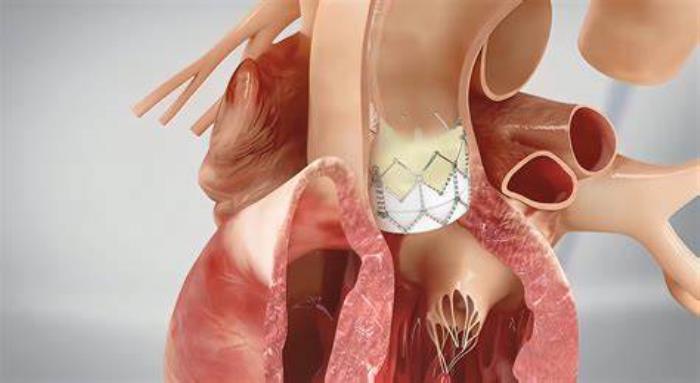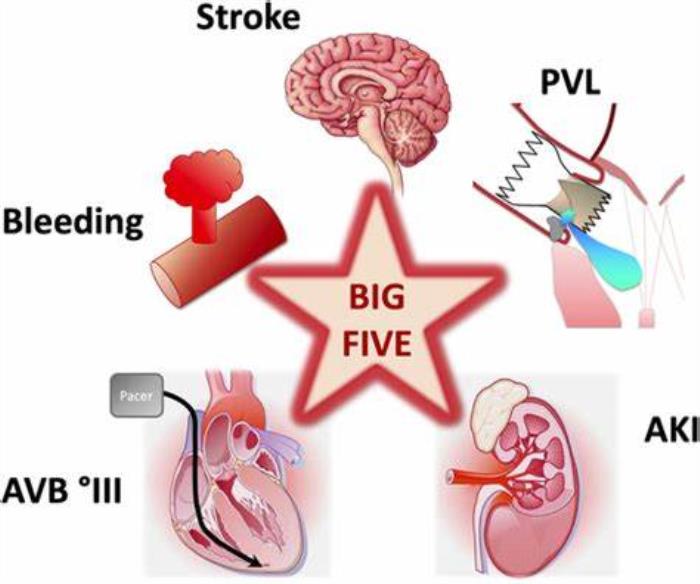Transcatheter Aortic Valve Replacement (TAVR) is a minimally invasive procedure designed to treat severe aortic stenosis by replacing the diseased valve. While TAVR offers many benefits, the recovery process is crucial to ensure the success of the surgery and enhance the patient’s quality of life. In the days and weeks following TAVR, patients can expect a period of careful monitoring, gradual recovery, and adjustments to their new heart valve.
Immediate Post-Surgery Recovery: The First Few Days After TAVR
After undergoing TAVR, patients typically spend a few days in the hospital for observation and recovery. Initially, the focus will be on managing pain and monitoring vital signs to ensure the heart is functioning well with the new valve. Depending on the individual’s health and response to the procedure, most patients are able to leave the hospital within 1 to 3 days. During this period, patients will also be closely monitored for complications such as bleeding, stroke, or arrhythmias, which may require further medical intervention.
Adjusting to Life with a New Heart Valve
Once home, the recovery process continues with the patient adjusting to life with their new aortic valve. This adjustment includes increased energy levels and improved heart function, as the heart no longer has to work as hard to pump blood through the narrowed aortic valve. As a result, many patients notice significant improvements in their symptoms, such as reduced shortness of breath, fatigue, and dizziness. However, it is important to remember that full recovery can take weeks to months, and patients must be diligent in following their doctor’s advice during this time.

How TAVR Improves Quality of Life and Heart Function
The primary goal of TAVR is to improve quality of life by restoring normal blood flow and alleviating the symptoms of aortic stenosis. After the procedure, many patients experience a rapid improvement in symptoms, such as better energy levels, reduced breathlessness, and improved physical endurance. Over time, the heart functions more efficiently, reducing the risks associated with untreated aortic stenosis, such as heart failure, stroke, or sudden cardiac arrest. This significant improvement often leads to a better overall prognosis and a return to a more active lifestyle.
Managing Discomfort and Pain After TAVR Surgery
While TAVR is minimally invasive, patients may still experience some discomfort in the first few days after surgery, particularly at the catheter insertion site or chest area. Pain is generally manageable with over-the-counter medications or prescribed pain relievers. As recovery progresses, discomfort should decrease, and most patients return to normal activities within a few weeks. Any persistent or unusual pain should be reported to the healthcare provider to rule out complications.
The Importance of Follow-Up Appointments After TAVR
Follow-up appointments after TAVR surgery are essential for ensuring the new valve is functioning correctly and that there are no complications, such as infection, valve leaks, or arrhythmias. These appointments typically involve regular imaging tests (e.g., echocardiograms) and physical exams to monitor the heart’s performance. Regular check-ups also allow healthcare providers to adjust medications and offer guidance on managing lifestyle changes post-surgery, ensuring the best possible long-term outcome.
Physical Activity and Exercise Guidelines After TAVR
Returning to physical activity is an important part of the recovery process after TAVR surgery. However, patients are generally advised to avoid strenuous exercise in the first few weeks after the procedure to allow the heart and body to heal. Low-impact activities like walking or light stretching are encouraged to improve circulation and strength. As recovery progresses, patients can gradually increase the intensity and duration of exercise, but all physical activity should be approved by the healthcare provider to ensure safety and avoid unnecessary strain on the heart.
Dietary Changes and Lifestyle Modifications Post-TAVR
After TAVR surgery, adopting heart-healthy habits is essential to optimize recovery and improve long-term outcomes. A balanced diet, rich in fruits, vegetables, lean proteins, and whole grains, is important for heart health. Reducing sodium, avoiding processed foods, and limiting alcohol intake help control blood pressure and reduce stress on the heart. Regular physical activity and stress management are also key lifestyle changes to support recovery and prevent further heart issues.
Managing Medications After TAVR: Blood Thinners and Other Prescriptions
After TAVR, patients are typically prescribed blood thinners to reduce the risk of blood clots and stroke. Other medications may include beta-blockers to regulate heart rate, ACE inhibitors for blood pressure control, and diuretics to manage fluid retention. Adhering to prescribed medications and attending regular follow-up visits to monitor their effectiveness is crucial for a smooth recovery and long-term heart health.
Monitoring for Complications and Warning Signs After TAVR
Post-TAVR patients should be vigilant for complications such as infection, blood clots, valve dysfunction, or changes in heart rhythm. Warning signs include chest pain, shortness of breath, leg swelling, dizziness, or fainting. If any of these symptoms occur, seeking immediate medical attention is important to prevent further issues.

Emotional Well-Being and Mental Health After TAVR Surgery
Emotional well-being is an often overlooked aspect of recovery. Anxiety, depression, or stress can arise post-surgery, especially as patients adjust to the physical and emotional changes. It’s important to have a strong support system, engage in relaxation techniques, and seek professional counseling or therapy if needed to promote mental health.
The Role of Cardiac Rehabilitation in Post-TAVR Recovery
Cardiac rehabilitation plays a crucial role in post-TAVR recovery by providing supervised exercise, education on heart-healthy living, and support for emotional well-being. It helps patients regain strength, improve cardiovascular fitness, and reduce the risk of complications while promoting confidence in their recovery journey.
Long-Term Prognosis: How Long Will Your New Valve Last?
TAVR valves are designed to last for several years, typically around 10 to 15 years, depending on factors such as the patient's age, activity level, and overall heart health. Regular monitoring is necessary to assess valve function and identify potential issues before they require reintervention.
Understanding the Risk of Valve Dysfunction and Reintervention
While TAVR valves are durable, valve dysfunction or complications, such as paravalvular leak or stenosis, may occur over time. If valve function declines, reintervention may be necessary, which could involve valve replacement or another procedure to address the issue.
How to Stay Heart-Healthy After TAVR: Preventing Further Heart Issues
Staying heart-healthy post-TAVR includes managing risk factors such as blood pressure, cholesterol, diabetes, and weight. A heart-healthy diet, regular exercise, avoiding smoking, and controlling stress are key to preventing further heart issues. Continued follow-up with a cardiologist is essential to monitor heart function and catch potential problems early.
Returning to Work and Social Life After TAVR
Many patients can return to work and engage in social activities within a few weeks to months after TAVR, depending on their recovery and health status. It’s important to follow medical advice on physical activity levels and work with your doctor to gradually resume regular activities as you regain strength.
What to Know About Travel and TAVR: Safety and Precautions
Post-TAVR patients should discuss travel plans with their cardiologist, especially for long flights or overseas travel. Considerations include ensuring access to medical care, monitoring medications, and being aware of travel-related risks like deep vein thrombosis (DVT). Always carry medical records and know what to do in case of complications while traveling.
Support and Resources for TAVR Patients: Connecting with Others
Joining a support group or finding online communities of people who have undergone TAVR can be helpful. Sharing experiences and advice with others who understand the recovery process can provide emotional support and helpful tips for navigating life post-surgery.
How Your Cardiologist Monitors Your Health After TAVR
Your cardiologist will schedule regular follow-up appointments to monitor your progress after TAVR. These visits typically include heart imaging (such as echocardiograms), blood tests, and assessments of overall heart function. Regular monitoring helps catch complications early and ensures that your recovery stays on track.
Conclusion: Embracing Life After TAVR and Living Well with Your New Valve
TAVR surgery offers significant improvements in quality of life for patients with aortic stenosis. While recovery can take time, adopting a healthy lifestyle, staying active, and following medical guidance can help you enjoy a long, healthy life with your new valve. By focusing on heart health and staying informed, you can continue to live life to the fullest after TAVR.
Best TAVR Procedure in India
The provides a minimally invasive solution for aortic valve replacement, offering quicker recovery times and improved heart function for patients with aortic stenosis.
Best TAVR Surgery Hospitals in India
The best tavr procedure hospitals in india feature state-of-the-art facilities and expert cardiac teams, ensuring top-quality care for patients undergoing this advanced heart valve procedure.
TAVR Procedure Cost in India
The tavr procedure cost in india is competitively priced, allowing patients access to cutting-edge treatment with transparent and affordable pricing options.
Best TAVR Surgeons in India
The Best TAVR Surgeons in India are highly skilled in transcatheter procedures, delivering precise and patient-centered care for successful valve replacements.
FAQ
What can I expect in the first few days after TAVR surgery?
In the first few days, you’ll likely experience some discomfort from the procedure, but most patients feel improvement quickly. Hospital stays typically last a few days for observation and monitoring.
How will my lifestyle change after receiving a new heart valve?
Your lifestyle will include dietary modifications, regular physical activity, and medication adherence. You’ll also need to monitor your heart health closely with follow-up appointments.
Are there any restrictions on physical activity after TAVR?
You may need to limit strenuous activity during the initial recovery phase. Your doctor will provide guidelines on when it’s safe to resume activities like exercise, lifting, or other physical tasks.
How long will my TAVR valve last?
TAVR valves typically last 10 to 15 years, but this can vary depending on age, health, and activity levels. Regular follow-up is crucial to monitor valve function.
What should I do if I experience complications after TAVR?
If you experience symptoms like chest pain, shortness of breath, or dizziness, contact your healthcare provider immediately. Early intervention can help prevent serious complications.